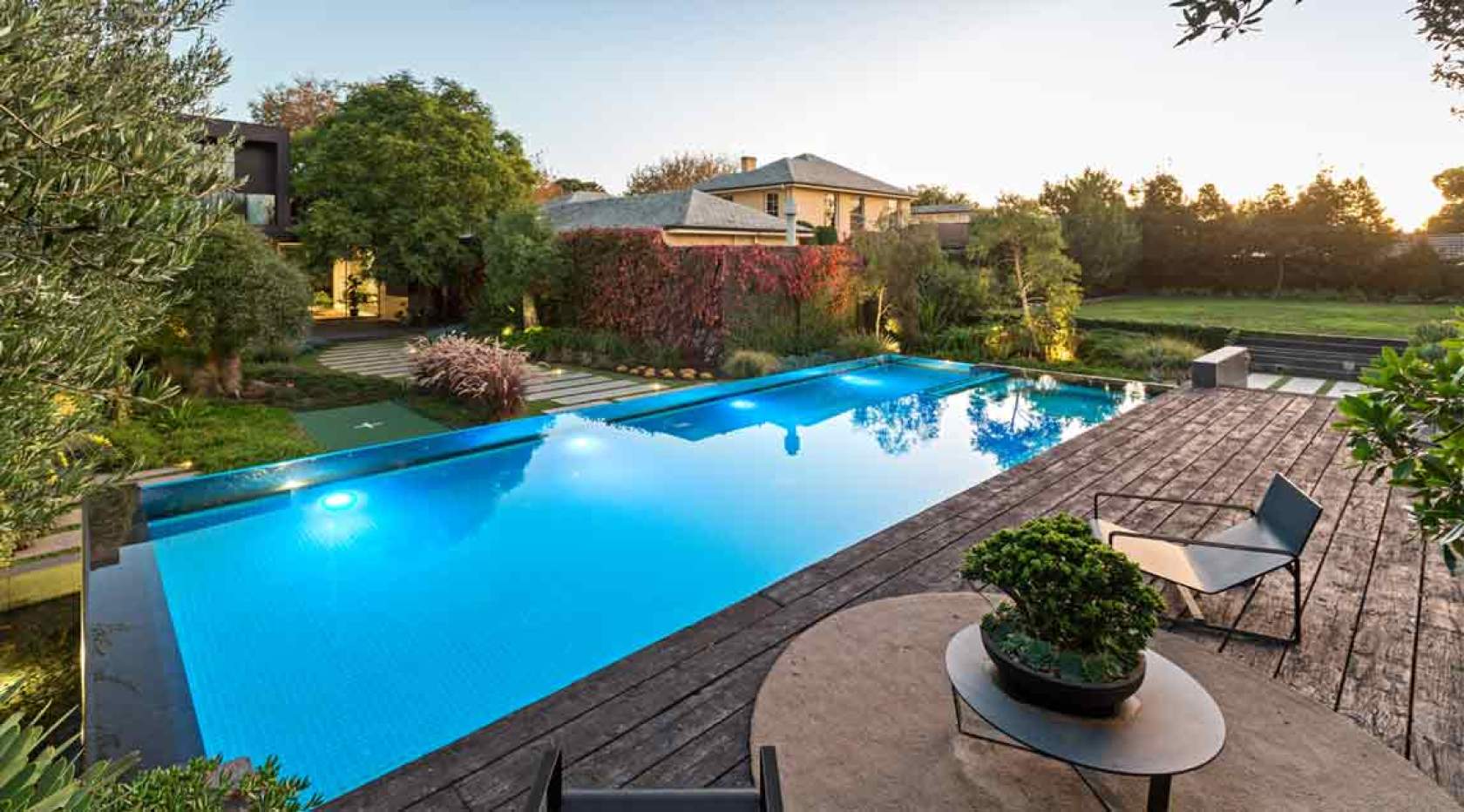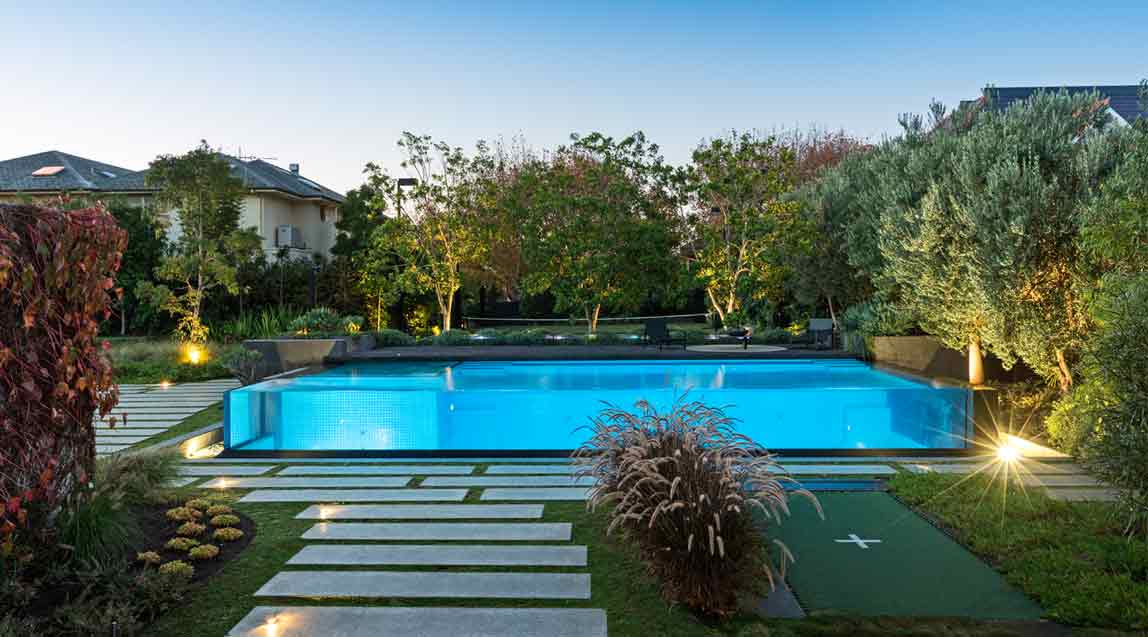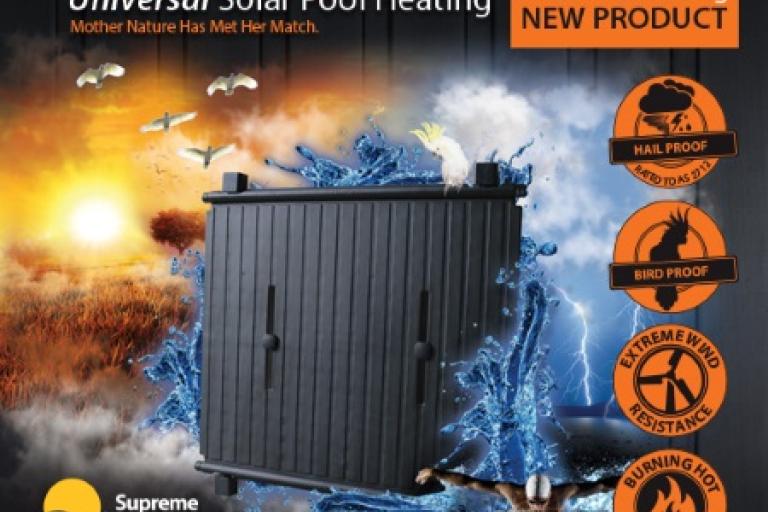Award winning photographer explains how to get the best shots of your swimming pool

Once again, it’s time to get your SPASA pool awards nominations in. Nominations close April 10, 2023.
In light of that fact, we’ve reprised the advice from renowned swimming pool photographer (and shooter of many award winning pools), Patrick Redmond.
Here he offers tips to help you show your pool to best advantage.
Make your pool shine!
When photographing the pool, remember you’re not just “selling” the pool itself, but more importantly, you are selling a lifestyle.
The pool and surrounds must be in perfect order. Lawns need to be mowed, glass pool fences especially need to be clean, pets water bowls, dog houses, kids toys and general junk that is not important to the pool needs to be tidied away and out of sight.
Pool cleaners should be removed from the water, and this should be done with enough time for the surrounds to dry off.
Paving around the pool needs to be clean. Some people may choose to wet this down but personally I think this is a big mistake. When it’s warm, the paving starts to dry almost instantly and becomes patchy looking – which looks worse than the odd dirty paver to begin with. And once you have started to wet the pavers you are constantly having to interrupt your photography to wet the pavers again and again.
The odd dirty paver can easily be sorted in post production.
Make sure any poolside sunbeds and tables are in the right place. Adding a few well-placed props such as towels and drinks can also enhance the image.
The best angle
When deciding on the best angle to photograph, it is important that the pool is shown within the context of the surrounds. Images are far stronger when other elements such as the surrounding architecture come into play.
Another great option is to have your pool photographed by a drone. This offers some excellent vantage points of the whole project that cannot be experienced at eye level.
However, it is important to make sure the drone operator is experienced and follows all of the correct procedures that relate to flying in such environments.
As far as equipment goes, the trusty phone can take a reasonable snap that’s more than adequate for your social media, but for awards, wall prints or magazines, something with more pixels and a higher resolution is a must.
Any digital camera these days will be more than up to the task – however you will definitely need a wide-angle lens to capture the pool in full, especially if you have a small space. An industry professional photographer will have all the right equipment to the handle the situation, no matter how large or small the project is.
All in the timing

One of Patrick Redmond’s many beautiful photos of the 2021 National Pool of the Year, built by Liquid Blue Pools
One of Patrick Redmond’s many beautiful photos of the 2021 SPASA National Pool of the Year, built by Liquid Blue Pools
Time of day is very important. Ideally you would shoot the pool in full sun to avoid any hard shadows that fall across the pool and surroundings. Be careful to pick your time correctly, paying special attention to the direction the pool faces to limit shadows caused by fences and structures in close proximity.
Time of year is also important – the closer we get to winter, the lower the sun is in the sky, and the more shadows we get. Sometimes shadows are unavoidable due the direction the pool faces. If the pool faces south, then more than likely shadows will be troublesome through most of the day. In this case, you could shoot the pool on an overcast day or very early in the morning or late in the afternoon. These options provide a low sun and even light, and won’t cause shadows.
Photographing your pool at dusk is also a popular and attractive option. In this case it is essential to have other garden or accent lights surrounding the pool. Relying on just the pool lights for effect does not make for great pictures. You want to see the whole project in detail to get the full effect. Again, the right time to photograph is extremely important. You want to shoot on dusk or just after when there is still some ambient light and a nice dusky blue tone in the sky.
When the conditions are just right you will be able to see the pool clearly with the available light, but also all of the garden, pool and surrounding lights. You will definitely need a tripod for this as exposure time will range to several seconds. Also remember to check that all surrounding lighting – and especially the pool lights – are in working order prior to the shoot.
Important tip: colour
Make sure the pool light colour you want is organised well before you are ready to photograph. My preferences are always the white or pale blue colour, as they tend to reproduce the best in photographs. Most lights are the multicolour LED type and can sometimes be tricky to get the right colour choices all on at once. Dusk moves quickly and the right moment can easily be lost when doing this.
It pays to be organised ahead of time.
Deadline looms
Don’t forget to get your entries in for the SPASA 2023 Awards of Excellence via the new portal. If you have problems email: keeta@spasa.com.au
State deadlines are April 10, 2023. Following the judging, the winners of the categories in each state will go into the highly coveted National Awards of Excellence and vie for the most prestigious awards in the country.
Contact: Patrick Redmond Photography: 0425 724 936; www.patrickredmond.com.au
Main image: 2021 SPASA National Pool of the Year, built by Liquid Blue Pools, shot by Patrick Redmond




